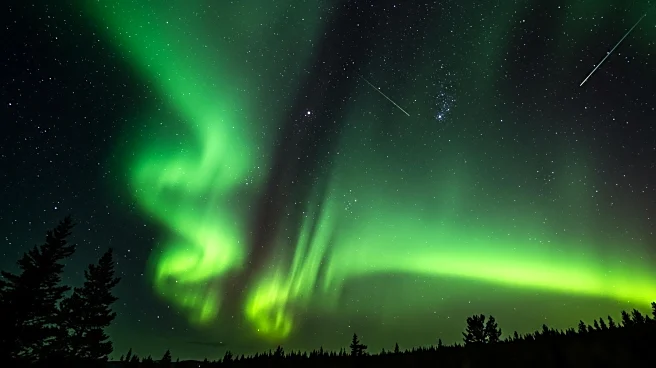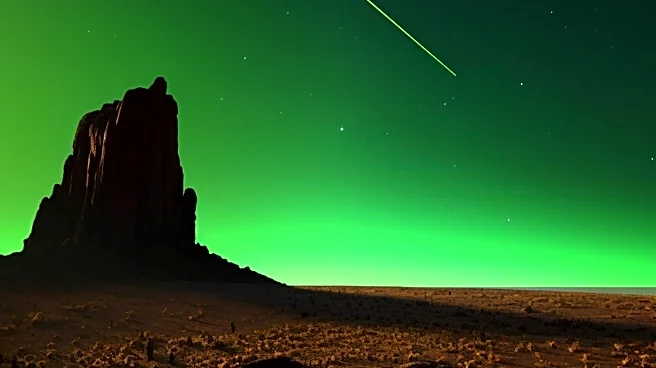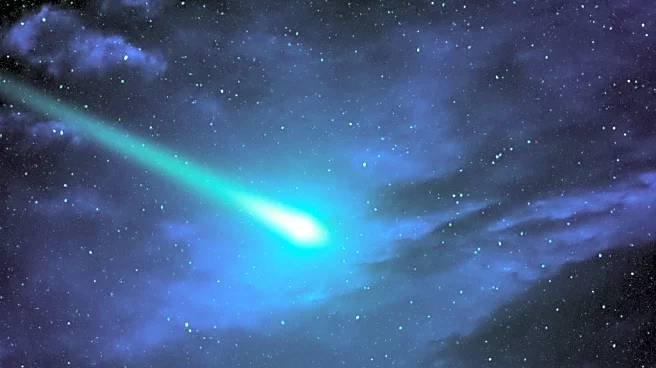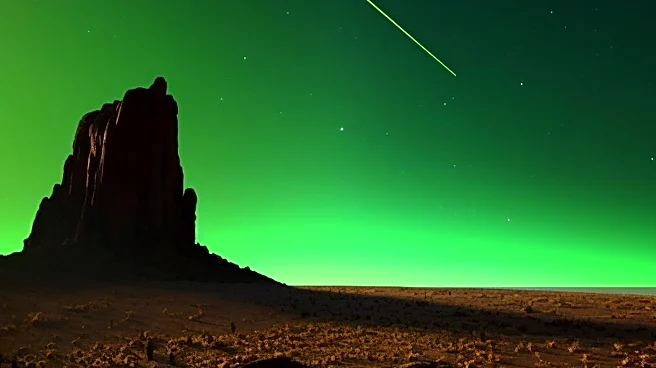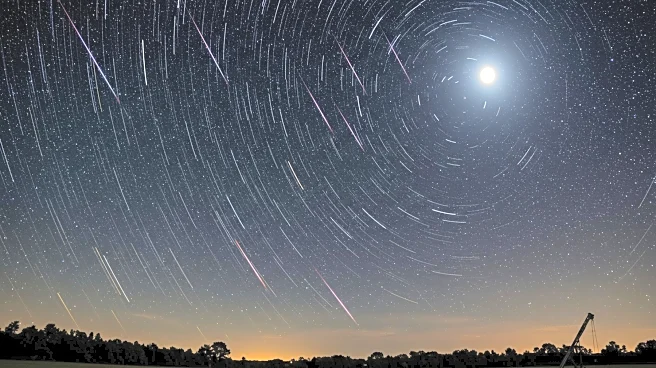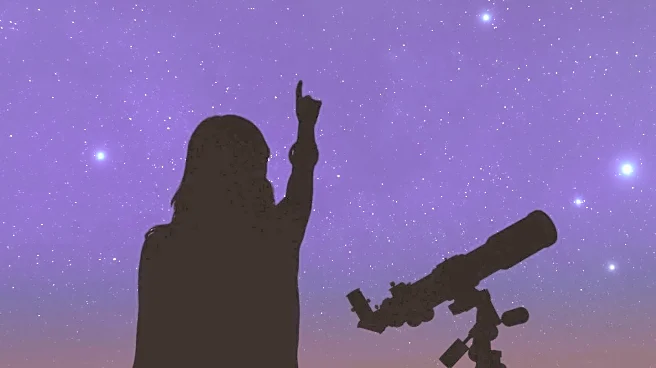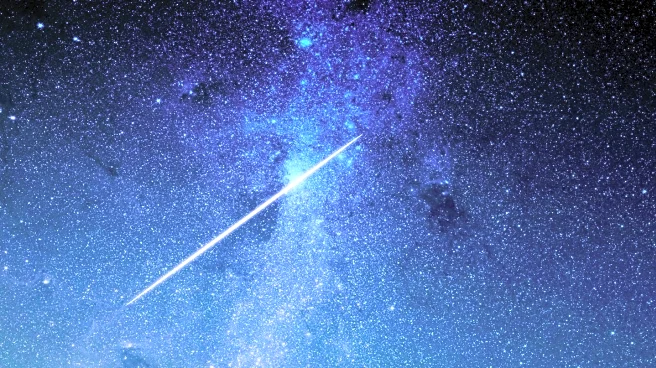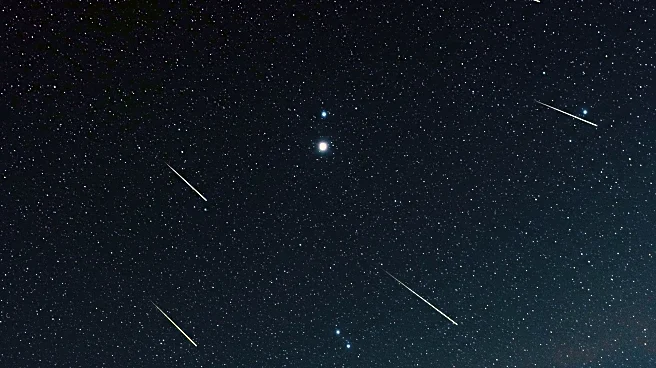What's Happening?
A rare combination of the northern lights and the Perseids meteor shower is occurring, offering a spectacular display in the night sky. The northern lights, caused by a G5 geomagnetic storm, are visible in northern regions, while the Perseids meteor shower, resulting from debris from Comet Swift-Tuttle, is peaking. The meteor shower is known for its bright fireballs, although visibility may be affected by a bright moon. This celestial event provides a unique opportunity for stargazers to witness both phenomena simultaneously.
Why It's Important?
The simultaneous occurrence of the northern lights and Perseids meteor shower is a rare event that captivates both casual observers and dedicated astronomers. It highlights the dynamic interactions between solar activity and Earth's atmosphere, offering insights into geomagnetic storms and meteor showers. Such events can boost interest in astronomy and science education, encouraging public engagement and appreciation for natural phenomena. The visibility of these events can also promote tourism in regions where they are most visible, benefiting local economies.
What's Next?
Following the Perseids, the next major meteor shower is the Orionids, expected to peak between October 22 and 23. While less dramatic than the Perseids, the Orionids offer another opportunity for skywatchers to observe meteors, especially in areas with minimal light pollution.
